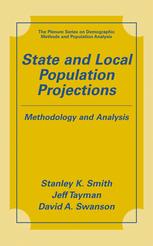

Most ebook files are in PDF format, so you can easily read them using various software such as Foxit Reader or directly on the Google Chrome browser.
Some ebook files are released by publishers in other formats such as .awz, .mobi, .epub, .fb2, etc. You may need to install specific software to read these formats on mobile/PC, such as Calibre.
Please read the tutorial at this link: https://ebookbell.com/faq
We offer FREE conversion to the popular formats you request; however, this may take some time. Therefore, right after payment, please email us, and we will try to provide the service as quickly as possible.
For some exceptional file formats or broken links (if any), please refrain from opening any disputes. Instead, email us first, and we will try to assist within a maximum of 6 hours.
EbookBell Team

5.0
100 reviewsThe initial plans for this book sprang from a late-afternoon conversation in a hotel bar. All three authors were attending the 1996 meeting of the Population As- ciation of America in New Orleans. While nursing drinks and expounding on a variety of topics, we began talking about our current research projects. It so happened that all three of us had been entertaining the notion of writing a book on state and local population projections. Recognizing the enormity of the project for a single author, we quickly decided to collaborate. Had we not decided to work together, it is unlikely that this book ever would have been written. The last comprehensive treatment of state and local population projections was Don Pittenger’s excellent work Projecting State and Local Populations (1976). Many changes affecting the production of population projections have occurred since that time. Technological changes have led to vast increases in computing power, new data sources, the development of GIS, and the creation of the Internet. The procedures for applying a number of projection methods have changed considerably, and several completely new methods have been developed.